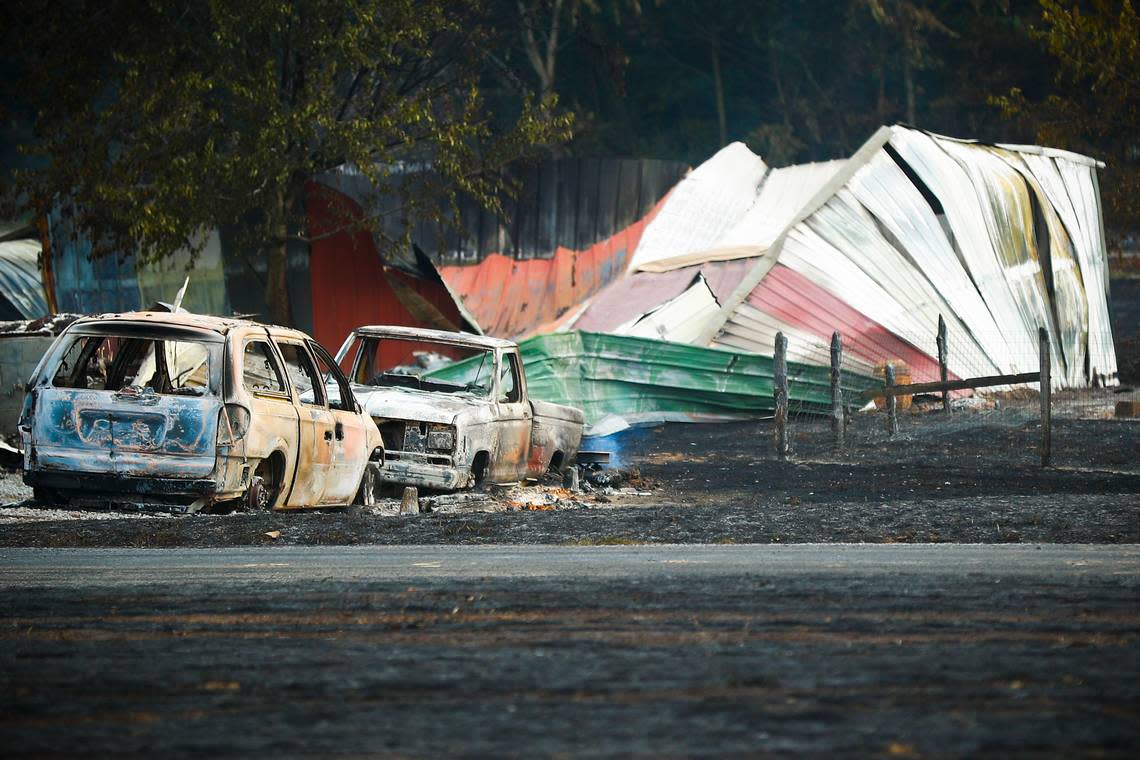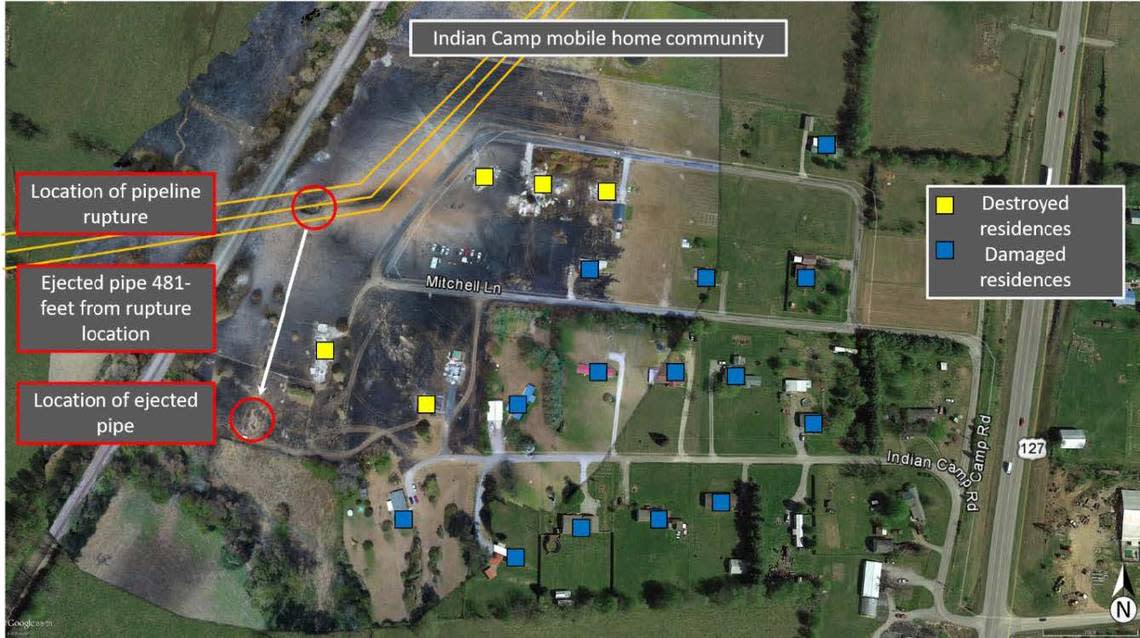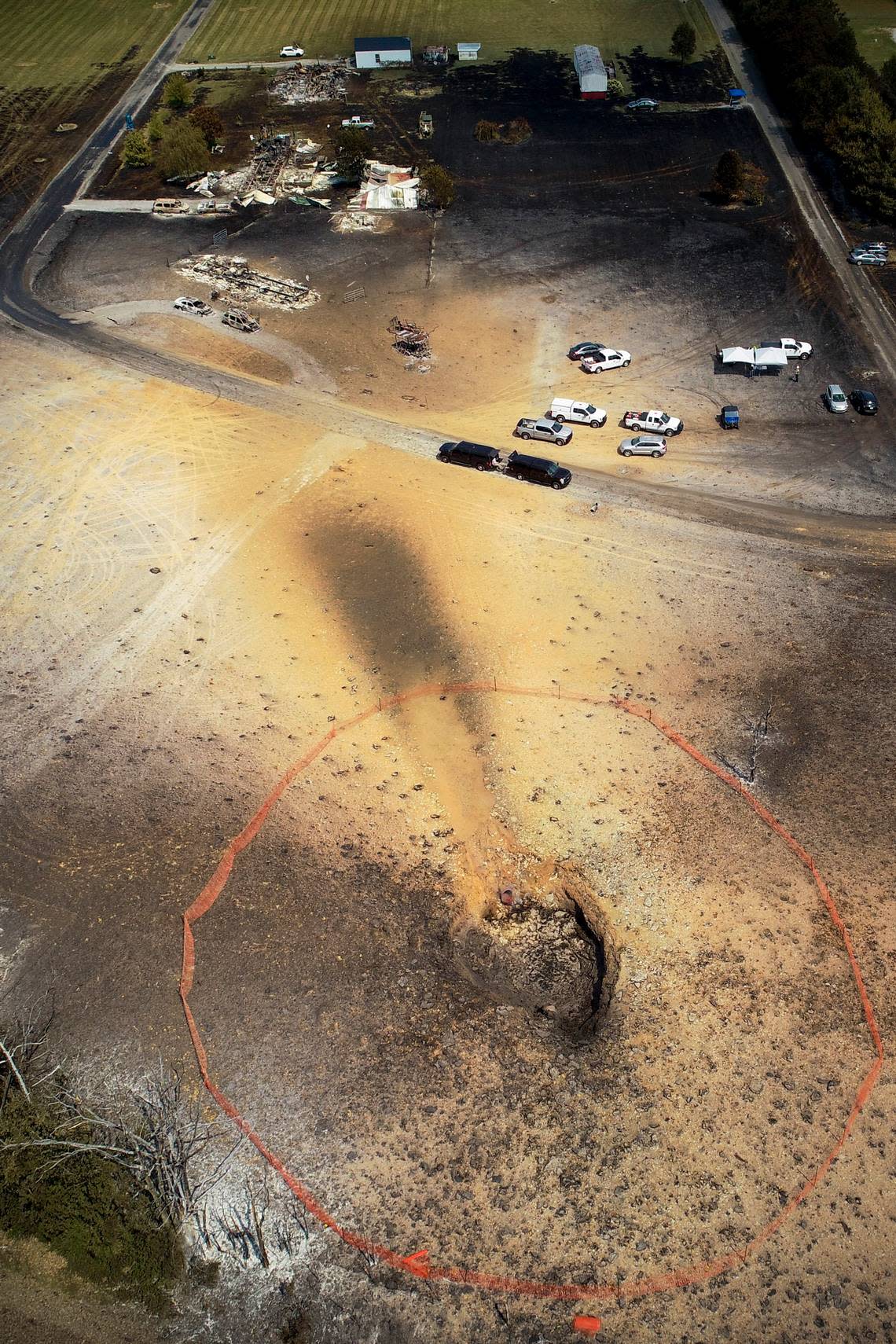Safety agency says defect, inadequate protection caused deadly pipeline blast in Kentucky
The deadly 2019 rupture of a natural-gas pipeline in Kentucky happened because of factors that included a manufacturing defect in the metal of the pipe and ineffective protection against corrosion, the National Transportation Safety Board said Wednesday.
The NTSB also said the operator of the pipeline, Enbridge, didn’t accurately assess the condition of the pipeline or properly determine the risks to it. That contributed to the accident in Lincoln County, near Junction City, which killed one person, the agency said in the report.
In fact, Enbridge had said in several annual assessments that it was unlikely a failure would occur on the section of pipeline that ruptured, the report said.
The NTSB had released information earlier that said the point where the pipeline ruptured was near defects in the metal called hard spots. Those are areas in a pipe where the metal is considerably harder than the surrounding metal.
The spots can happen during the manufacturing process or because of changes in the chemistry of the metal over time, and can be more susceptible to cracking when other threats such as corrosion are present, the report said.
Enbridge underestimated the risk posed by the hard spots because its procedures were not consistent with federal guidance and industry knowledge, the NTSB said in the report.
Texas Eastern Transmission, which owned the pipeline before Enbridge, had the line inspected in 2011, but the contractor did not report any evidence of hard spots, according to an NTSB report.
Texas Eastern is owned by Spectra EnergyPartners LP (Spectra), which Enbridge bought in 2017, the report said.
Spectra and Enbridge did not re-inspect for hard spots in the pipeline section that failed between April 2011 and the accident, the report said.

After the failure, however, NTSB investigators asked the contractor’s successor company to take another look at the readings from 2011, and the company found 10 hard-spot indications that had not been reported earlier, according to the NTSB report.
Testing also found corrosion pitting in the pipe, the NTSB said.
The pipeline failed at 1:23 a.m. on Aug. 1, 2019, sending a fireball hundreds of feet into the air as residents who were shaken from their sleep fled the inferno.
The heat was so intense that it melted the siding on a house 1,100 feet from the blast crater, the NTSB said.

Lisa D. Derringer, 58, collapsed in the heat as she tried to get away and died. Her mobile home was just over 300 feet away from where the flames erupted from the ground.
Five other residents near the blow-out suffered burns or smoke inhalation, and Colby Reik, a deputy sheriff and Lexington firefighter, received burns as he helped an elderly couple from their home, according to the federal reports.
The fire forced the evacuation of 75 residents, destroyed five mobile homes, damaged 14 other houses and scorched 30 acres of land, according to an NTSB report.

The pipeline that failed was manufactured in 1957. It is one of three parallel, 30-inch diameter lines that at the time carried natural gas from Pennsylvania to Mississippi.
The line had a coating on the outside of coal tar enamel and had cathodic protection. That is a system in which an electrical charge is applied to the outside of the pipe to minimize corrosion from moisture on any exposed metal.
In that process, hydrogen generation occurs at exposed pipe surfaces. That’s why the pipe has to be coated properly to keep hydrogen from eating into the wall of the pipe, called hydrogen evolution.
The line first carried gas from the Gulf Coast north, but between 2014 and 2017, the operator, Spectra, made changes to allow gas flow either way.
The company identified an increase in temperature at a compressor station near the rupture site as a potential risk. Corrosion on the outside of the pipe can increase at higher temperatures, the report said.
The NTSB report said inspections showed that the level of cathodic protection on the pipeline were below federal standards at times before the failure.
The company upped cathodic protection after the flow reversal, but it didn’t reduce the corrosion and “corrosion anomalies” in the pipe increased, the report said.
The agency concluded that the protective coating on the pipe deteriorated and the cathodic protection was ineffective.
Spectra and Enbridge did not “effectively identify, investigate or manage” the impact that reversing the gas flow would have on the level of hydrogen getting into the surface of the pipe, “which ultimately contributed to the failure of the pipeline.”
NTSB also said that the calculus used by the Pipeline and Hazardous Materials Safety Administration to figure the potential impact of a pipeline break is based on assumptions that don’t match findings from recent accidents, and recommended a change.
Enbridge did not respond Wednesday afternoon to a request for comment, but the NTSB report said the company made a number of changes after the accident aimed at improving how it keeps pipelines safe, including more than doubling its staff dedicated to that.
The line that blew up in Lincoln County also failed in November 2003 near Morehead and in February 1986 in Garrard County. The Garrard County incident injured three people.
One of the other lines blew up in April 1985 in Metcalfe County, killing five people and injuring three others.
